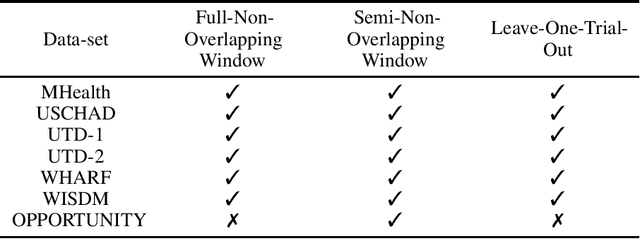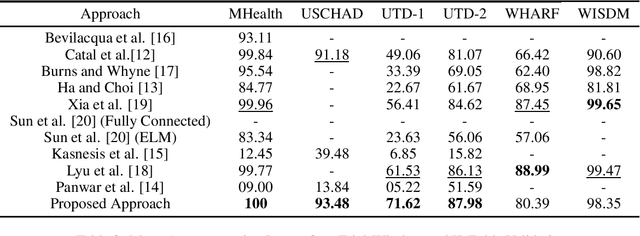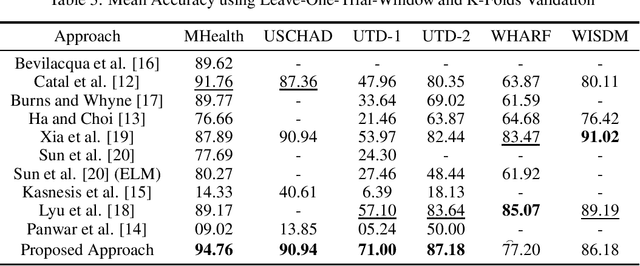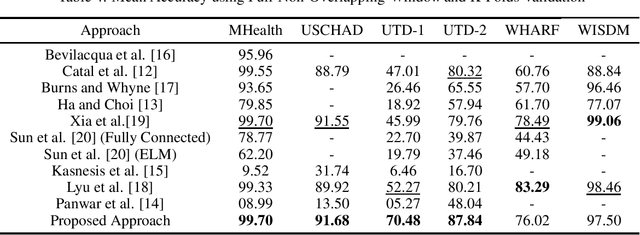Mayada Hadhood
Human Activity Recognition using Wearable Sensors: Review, Challenges, Evaluation Benchmark
Jan 06, 2021



Abstract:Recognizing human activity plays a significant role in the advancements of human-interaction applications in healthcare, personal fitness, and smart devices. Many papers presented various techniques for human activity representation that resulted in distinguishable progress. In this study, we conduct an extensive literature review on recent, top-performing techniques in human activity recognition based on wearable sensors. Due to the lack of standardized evaluation and to assess and ensure a fair comparison between the state-of-the-art techniques, we applied a standardized evaluation benchmark on the state-of-the-art techniques using six publicly available data-sets: MHealth, USCHAD, UTD-MHAD, WISDM, WHARF, and OPPORTUNITY. Also, we propose an experimental, improved approach that is a hybrid of enhanced handcrafted features and a neural network architecture which outperformed top-performing techniques with the same standardized evaluation benchmark applied concerning MHealth, USCHAD, UTD-MHAD data-sets.
 Add to Chrome
Add to Chrome Add to Firefox
Add to Firefox Add to Edge
Add to Edge